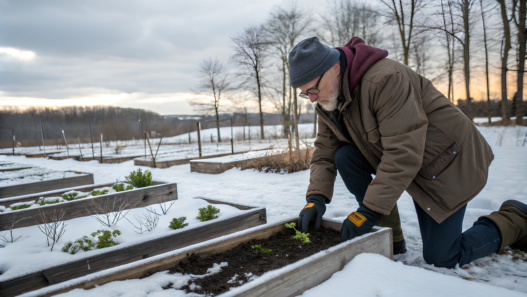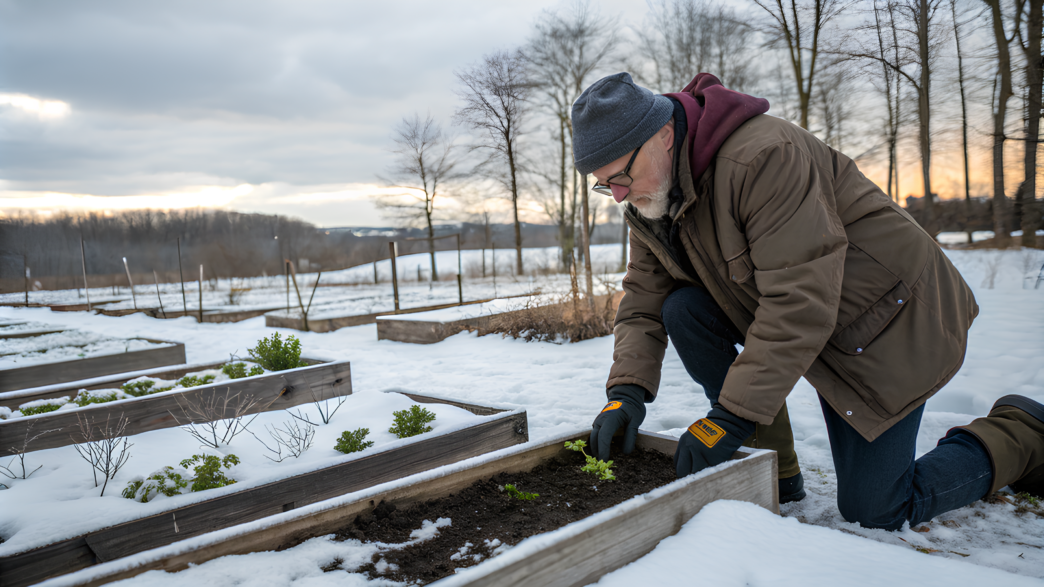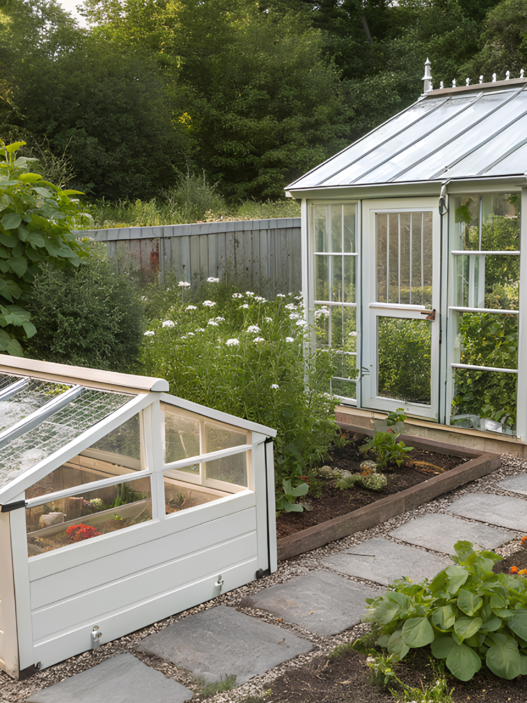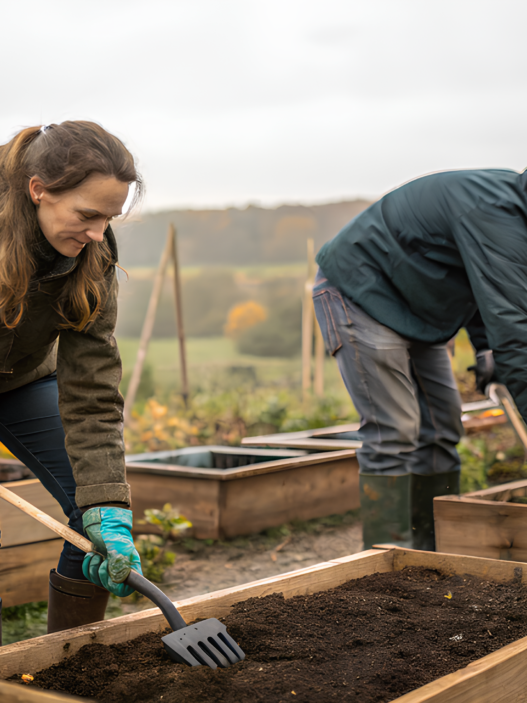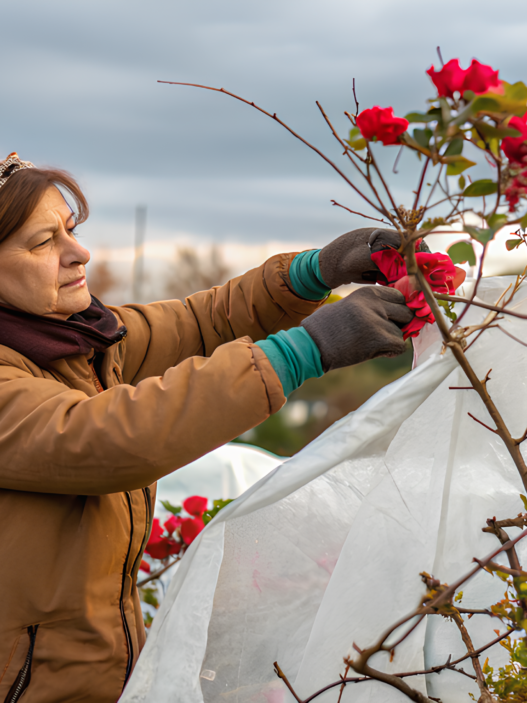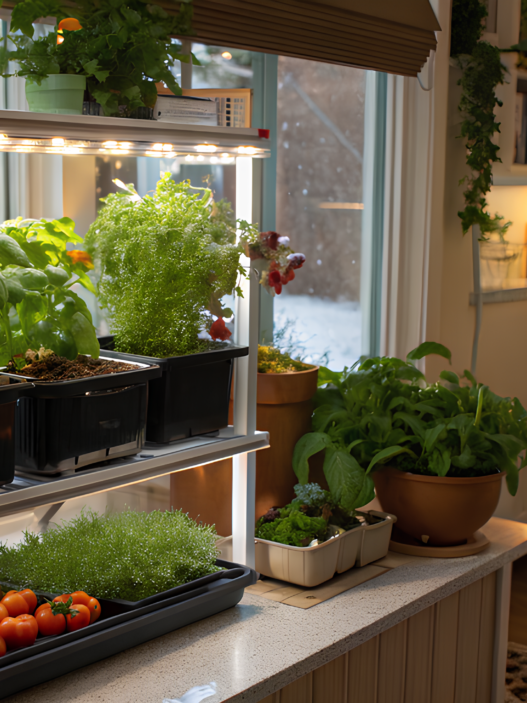With the arrival of fall, when the cold weather and less sun come, then there is a temptation to do nothing at all on the site and leave the beds alone until spring. But we all realize that if you take a little time to prepare the garden for winter, you can significantly improve the condition of the soil and make spring work easier. In this article I will tell you winterize raised garden beds, so that your plants will be healthy and ready for spring.
Assess the condition of winterized raised garden beds
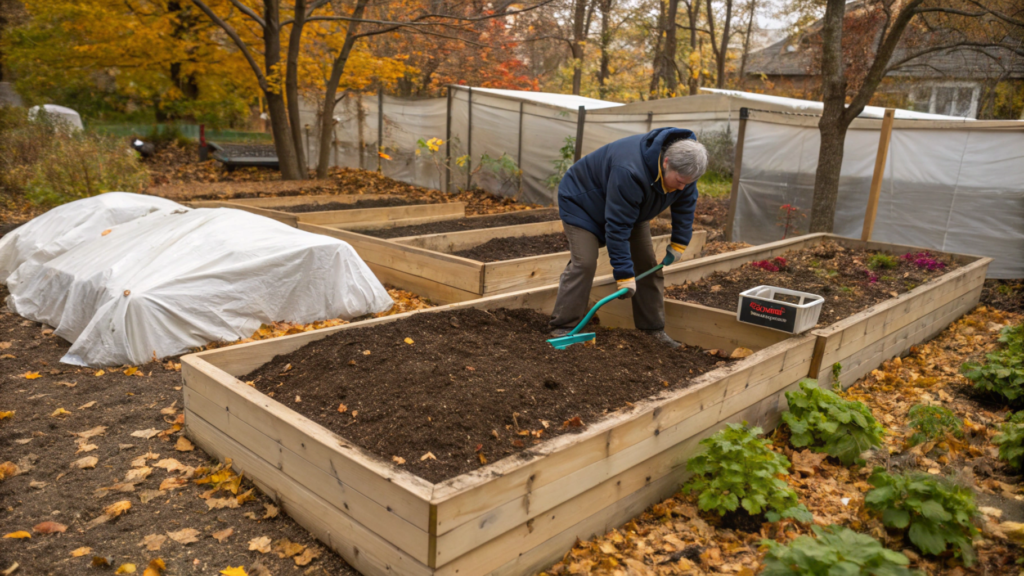
First of all, we need to understand the condition of our beds and what we want to get as a result. Does the soil need fertilizing? Or do you want it to be ready for early sowing after frost? This approach and understanding of these points will help you properly winterize raised garden beds, taking into account your specific conditions.
Step 1. Remove dead plants and debris
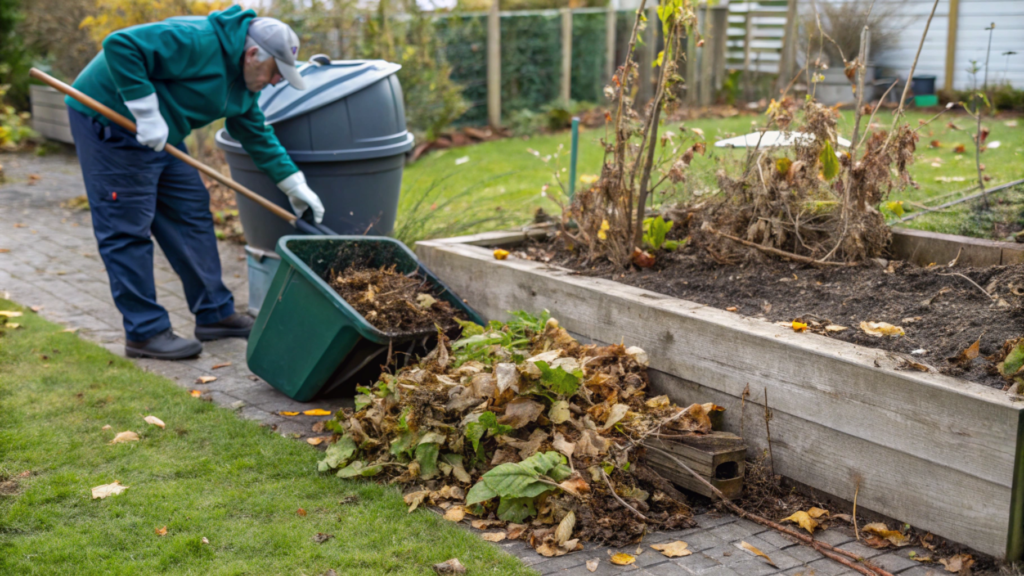
At first glance, it may seem like leaving dead plants in the bed for the winter is a good idea to create mulch. But it actually spreads pests and diseases. I always start by removing all dead plants, especially those that may have been infected. Of course, if the plants are healthy, add them to your compost; not if not, make sure to dispose of them so you don’t spread disease.
Don’t forget to also remove any fallen leaves that may contain fungal spores. I sometimes think of this step as preparing the garden for “sleep”.
Step 2. Add organic matter and compost
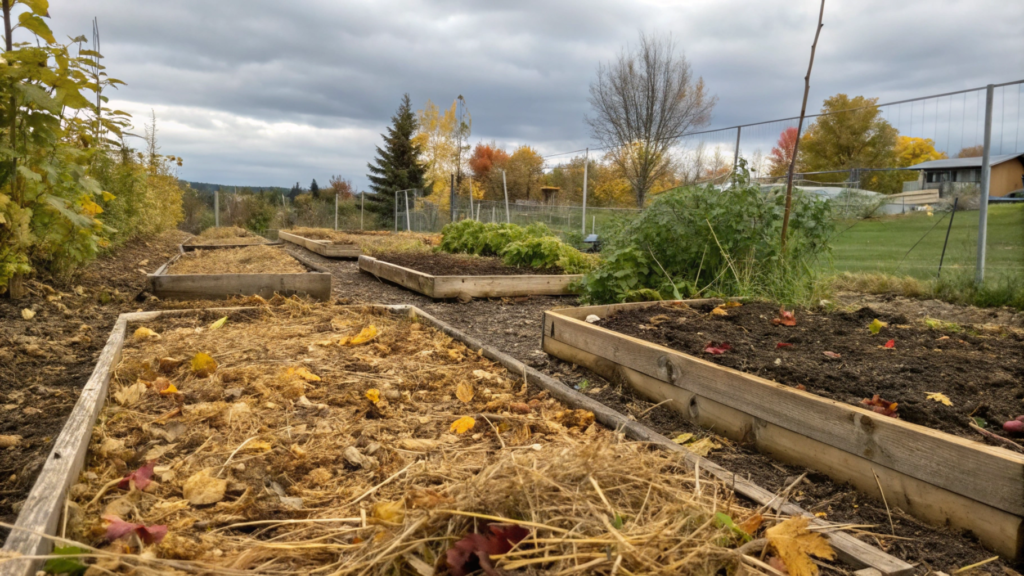
Nature is very wise, she gives the winter a chance to restore nutrients to the beds. I usually spread a good layer of compost or rotted manure over the surface of the beds. The thickness of the compost layer, usually about 5-7 cm, can vary depending on needs. Over the winter, this layer will decompose and enrich the soil for spring.
Mulch is also good for additional soil protection. It retains moisture, prevents erosion and stabilizes soil temperature. Straw, shredded leaves or wood chips are all great options, and you can choose from the suggested and available materials.
Step 3. Green manure for soil protection

If we want to winterize raised garden beds in the best possible way, we need to plant green manure. Wheatgrass, clover and peas enrich the soil with organic matter and prevent erosion, as well as suppress weed growth, which makes spring preparation much easier later.
Last year I planted wheatgrass and the result exceeded my expectations. The green manure not only protected the soil, but also added a lot of organic matter when I plowed it in the spring. There is something magical about watching a bed come alive in the spring thanks to these strong little plants.
Step 4. Protection with burlap or protective coverings
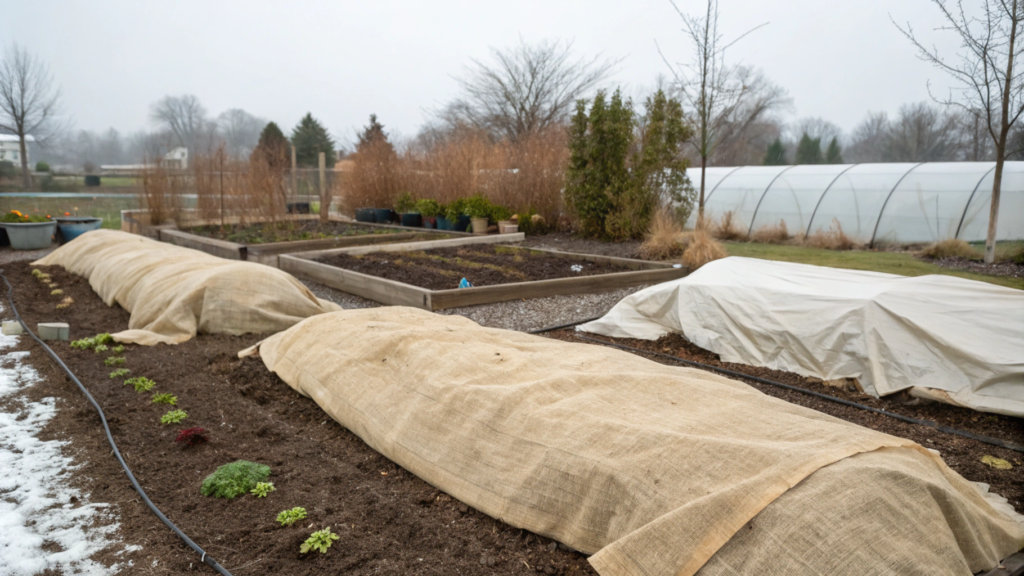
If your region has harsh winters, you can use burlap or protective coverings for additional protection. This method of protection will help keep the soil warm and protect it from strong freezing winds. This relatively small layer can make a big difference in keeping the soil healthy and “alive” throughout the cold winter.
And for perennials and more delicate plants, you can add an insulating blanket over the top of the bed. It’s simple, effective and definitely won’t bankrupt you.
Step 5. Watering tips to winterize raised garden beds

Here is another important tip how to winterize a raised bed garden, which, by the way, is often overlooked. It is, of course, about watering. Before the first frosts beds should be abundantly watered. Perhaps it will seem strange and illogical to some, but moist soil retains heat better than dry. The main thing here is not to overdo it, the soil should be moist, but not waterlogged.
Step 6. Strengthening the edge and border of the beds
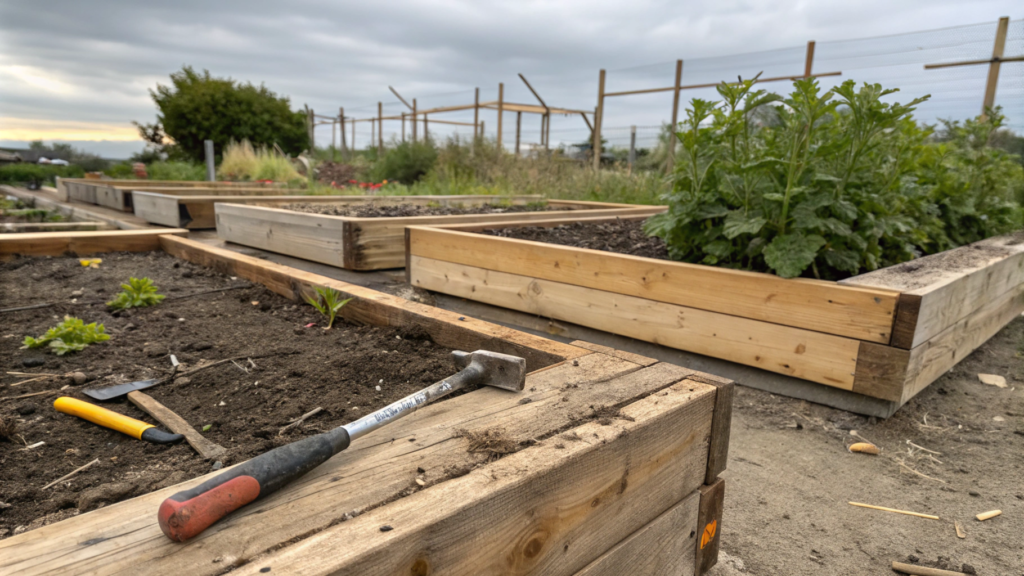
Raised beds, especially wooden ones, need a little maintenance before winter. Check the boards for strength, rot and erosion around the edges. Fixing these minor issues now will save you problems in the spring and save you time.
I usually apply a fresh coat of non-toxic protective coating to wood beds before winter to protect them from winter moisture and cold.
Extra step. Solarization for pest control
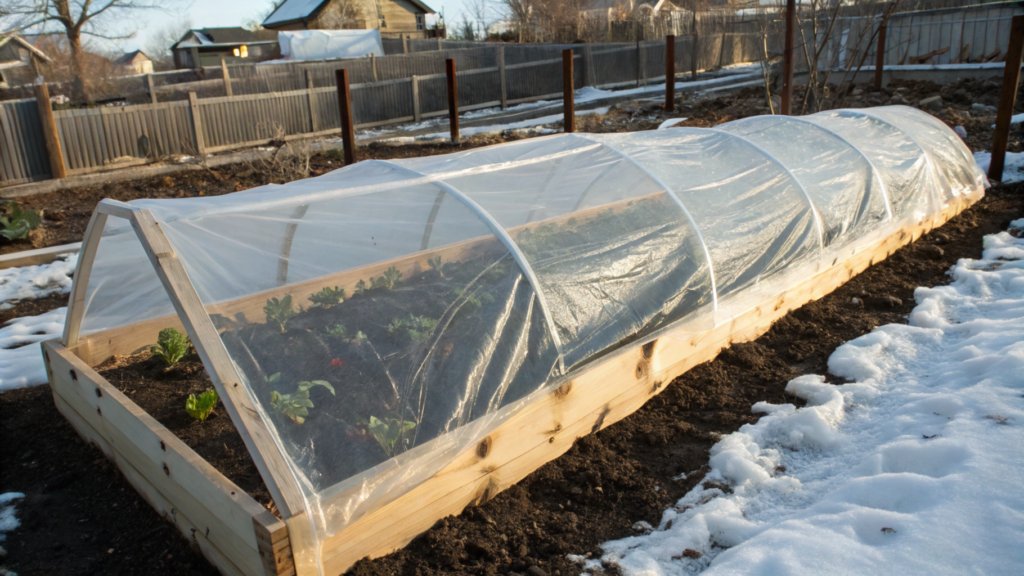
If you have had serious pest problems on your soil, consider solarization. I tried this method a couple years ago and it has helped me tremendously. All you need is some clear plastic sheeting. Stretch it tightly over the bed and secure it. Over the course of a few sunny winter days, the soil under the film will warm up while killing the pests and diseases in the top layer. This is sort of like a “reset button” for your garden.
Recommended Products for Preparing Raised Beds for Winter
- Compost and Manure. Improve your soil with organics from Amazon, like Black Kow Composted Cow Manure.
- Protective Coverings. For extra frost protection, try Agfabric Row Covers.
- Clear Sheet. Perfect for solarization, Farm Plastic Supply UV Resistant Sheeting.
Bringing it all together
By following the steps above, you’ll not only learn how to winterize raised garden beds, but you’ll also lay the foundation for a healthy, thriving garden in the spring. As we’ve said many times before, winter isn’t the end of gardening, just a quieter time as our garden prepares for another fruitful season
Take the time to care for it now, and spring will bring amazing results.
